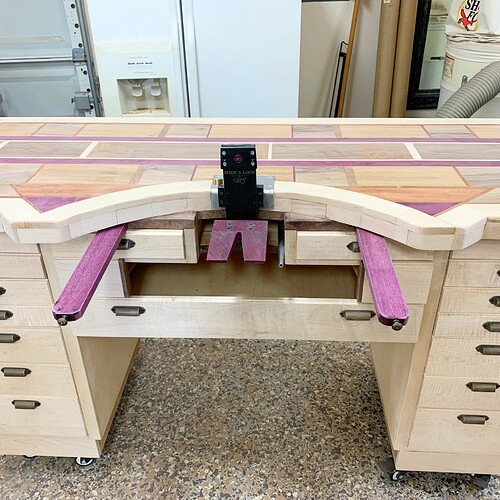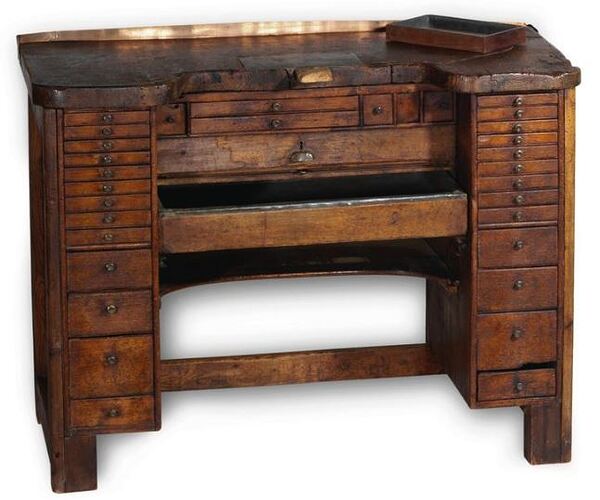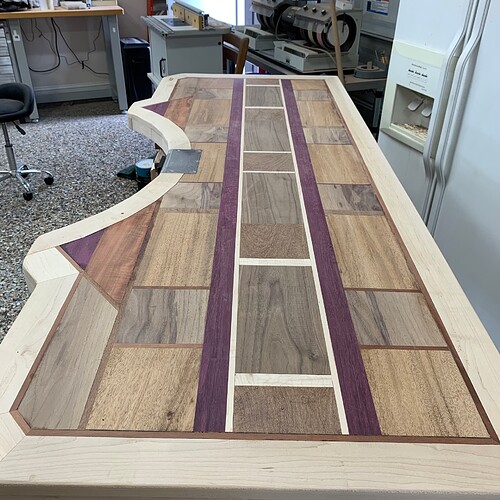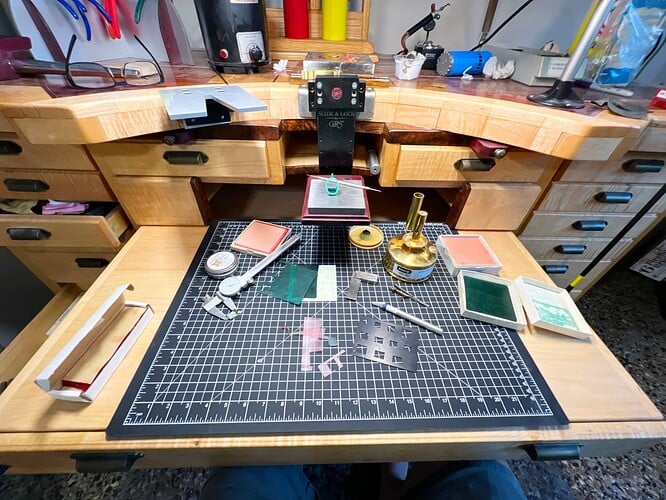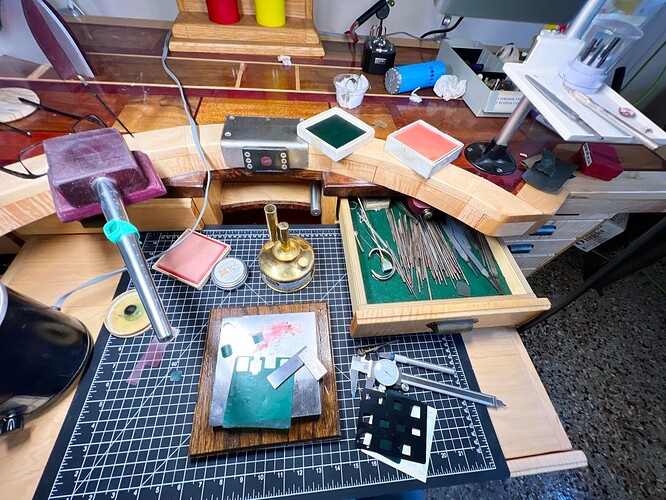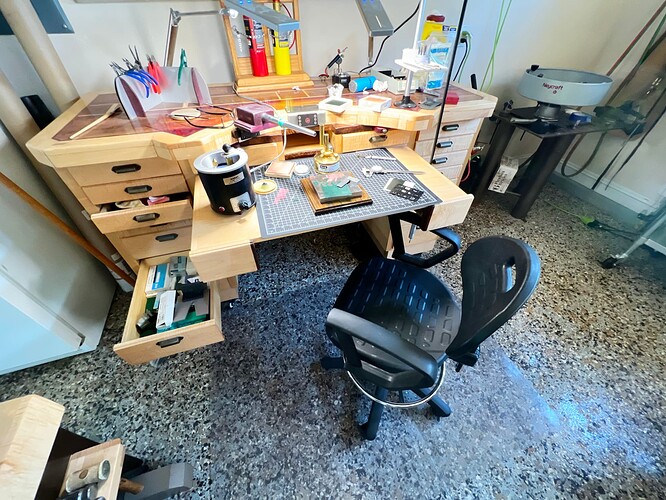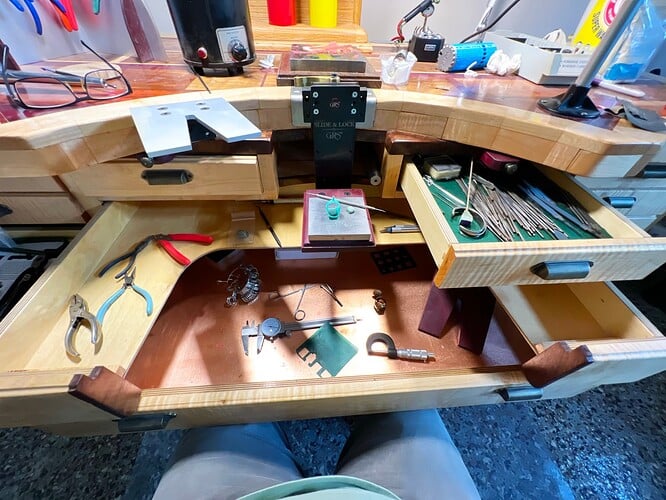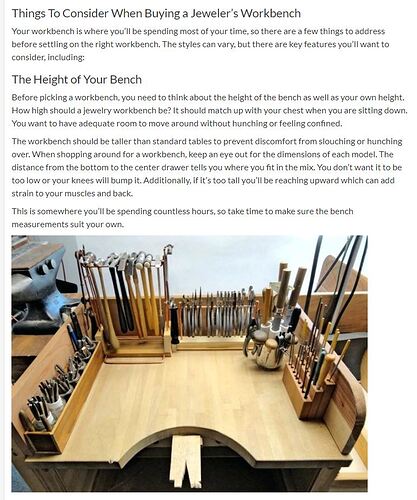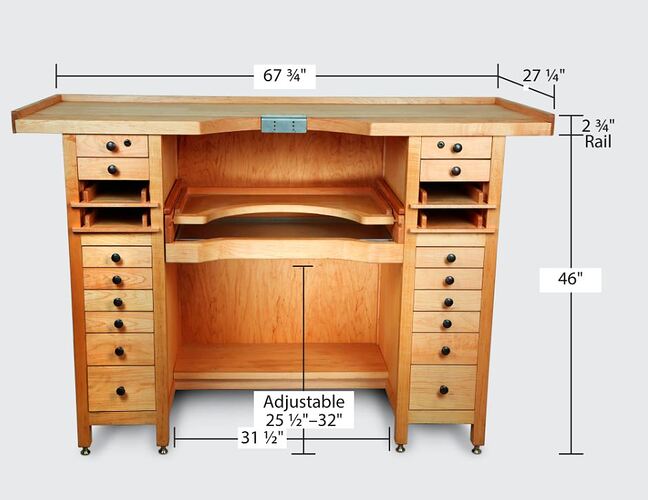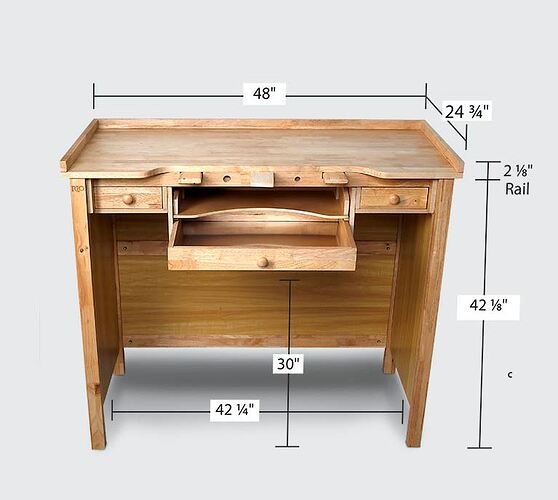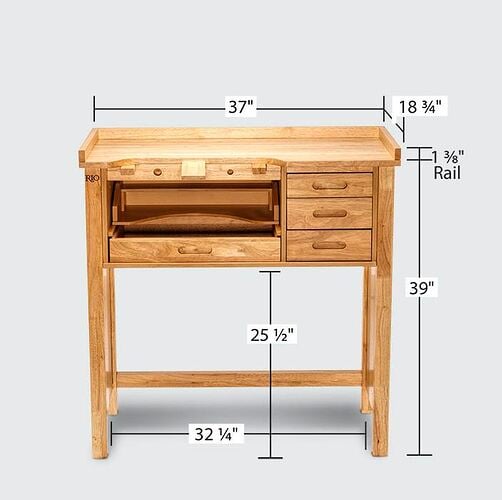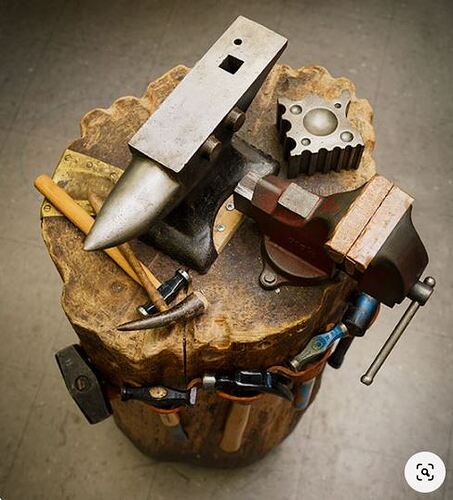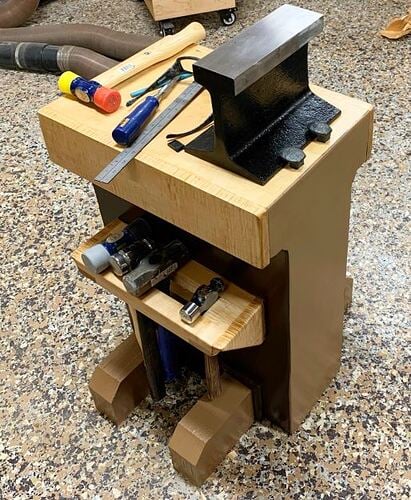If I were looking for a chair for a jeweler’s bench, I would get an ergonomic one with adjustable arms. You might or might not use them much, but they are there when you want them.
Thanks for your concern
The workbench you shared is for a school without much of a budget I might add.
The bench you show has no storage for anything, workbench top is too thin to handle any hammering. You could never work under the center drawer shown in your selection so all the waste goes on the floor instead of the lower center drawer.
I admit that I am not a professional Jeweler, I am a Physicist and have had a career in Engineering for 41 years now. So, the question I always ask when designing something, is does form follow function or the other way around?
A fine balance is the best but both are important…
From what I can tell I this is more typical of a actual working Jeweler environment.

Where most bench designs are created from old desks and retrofitted.
Consider this first example from the 1800’s
old antique jewelry workbench
What you can observe here is that most of the top is just a nice place to keep things handy and mount poles for Foredom units, microscopes and power supplies and maybe your coffee cup and maybe customer paperwork
Front edge of the bench as you notice has lots of attachments and holes for ring mandrels and plyers and gets pretty messy but that is the business!
My research indicates that the Jewelers work space is around shoulder level so you can see what you are doing. Jewelers have an incredible amount of tools and supplies necessary, so good storage makes it convenient and organized.
So, the space you use, is in front of the bench centered around the vice pin which is adjustable GRS system with all the attachments. The attachment point is very solid because of the materials used that’s 3 inches (4 pieces of ¾ inch hardwood, oak inside top) of alternating grain laminated hardwood and the attachment point is mitered into the bench using 3 1/2-inch stainless screws into bench top. It won’t break off and damage the bench.
Under that is another 1 ½ inch internal plywood with a groove for the arm rests which extend and hide when not in use.
Your main point I believe is covered by this…
I decided to make the additional feature of a removable top which can sit on top of the bottom 2 center drawers, but no hammering allowed as you would break the drawer slides. If you need to get rough simply turn your chair around and use the anvil stump.
It offers some flexibility in the height of working
Below is with the removable top in the lower position
Below is a picture in Upper position 6 inches higher
Here is a view with chair for scale
The cool thing is that the drawers actually close with the removable top on!
Here is a view with the removable top absent
Lower drawer contains a copper removable tray to collect gold and silver filings
and wax what ever I also have a smaller pan which is not shown but easier to capture desirable metal debris.
I would offer you also this advice printed in the book “The Jewelers Workbench” by Charles Lewton-Brain, ISBN 978-0-9799962-0-7
Below are a few commercial versions
Anyway, I did think about the design before investing several thousand dollars in materials.
There are no plans you can buy anywhere so its a fun project to complete with 17 drawer openings to construct. The curved front of the bench was challenging to make for sure
Best Regards
Jeff
FWIW, my reply was to kleingray’s remark about working on a regular table. The mini-bench is meant merely as a stopgap.
Also, if I were building a bench from scratch these days I’d probably go with a European design. These have a much deeper cutout, where the bench top itself can serve as arm rests, and with a leather bench apron.
Thanks for the clarification.
Would you mind sharing a picture of what you are referring to
Jeff
Elliot…Me too. I may just do it anyway. I have built arm rests into my current soldering bench, but they still need improvement. My arms shake more than they used to and I need all the help I can get keeping them still…Rob
Here’s a pinterest page with a bunch of different benches. Several are European style with the leather bench skin.
Also, in the youtube videos of the London jeweler Bobby White you can seen him working at such a bench.
Thanks for sharing 
Hi Elliot,
thanks for sharing. I have been searching for a solution for catching things dropped from the bench…i am thinking i need coverage around my sides as well as front/ lap…
i like the idea of a leather hide being soft…i could lean into it abit…and there would be no hard drawer to limit movement of my legs/ thighs…
i am thinking maybe have the hide on pull out drawer slides…
i also thought about a hide apron…goes over my head…bottom attaches to bench…moveable bench to bench…
still fantasizing about a design
julie
I have been reading about the issues people on this forum have with essential tremor.
"Essential tremor is a nervous system (neurological) disorder that causes involuntary and rhythmic shaking. It can affect almost any part of your body, but the trembling occurs most often in your hands — especially when you do simple tasks, such as drinking from a glass or tying shoelaces.
Essential tremor is usually not a dangerous condition, but it typically worsens over time and can be severe in some people. Other conditions don’t cause essential tremor, although essential tremor is sometimes confused with Parkinson’s disease.
Essential tremor can occur at any age but is most common in people age 40 and older."
I worked as a technician designing and building equipment for people with special needs for nearly 40 years. Many of the people I saw in that time had Cerebral Palsy, Friedrich’s Atataxia, MS, Stroke and many had one degree or another of athetosis, Essential Tremor, or spasticity. People want to live a normal life and my job was to help as much as was possible. Many folks found work arounds for the tremors to suit their own unique situations. One older woman who had Parkinson’s Disease, which is not Essential Tremor, was a baker. She found that her tremors wouldn’t allow her to measure any liquids with any accuracy and cake decoration was just not at all possible. We tried several support methods but Parkinson’s is a different thing entirely and none of the support methods worked at all. I recalled reading in a trade journal about a tethering method used in Australia where a simple loop of strapping [we used one inch canvas webbing] was wrapped around the user’s elbow and the corresponding back post of a chair. The stress of leaning or straining against the strap with her elbow took away the tremor and greatly improved her ability to use her hands with greatly reduced shaking.
The stabilizer doesn’t need to be a strap, it could be a post or the back of a chair. There are many ways to accomplish the same effect. And I am sure it won’t work for everyone. But it worked for more than a few of my clients.
Don Meixner
beautiful bench and a great studio! wonderful!
I like the design of your anvil and bump out looks like an an anvil. Very cool.
Oohhhh i need one!
I recently added two pieces of electrical conduit about 16" long that can be inserted into holes in my bench that allow me to support my arms when necessary. They help, but they get in the way…Rob
Omg i want to build one like that. Beautiful
